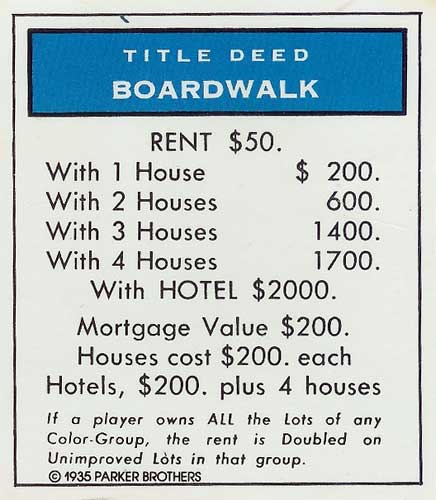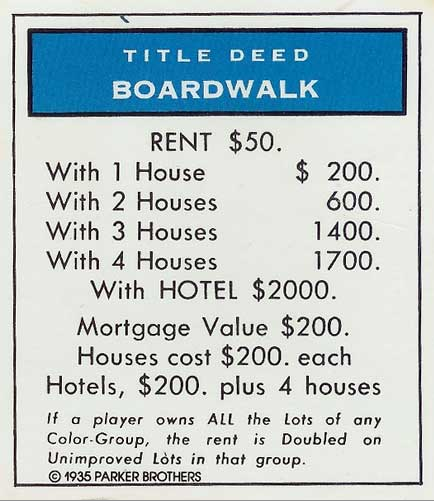Last month I discussed cash on cash yields on new purchases. This month, let’s talk about our current holdings and what to do about increasing income.
Last week, I was presented with current rent rolls on a number of buildings along with rent surveys of the each property’s submarket. I was asked by the Regional Property Supervisor why I hadn’t raised rents since 2008. Actually I was surprised that I raised rents in that year since the peak of the market was in 2007 and the crash began the next year.

During the last 4 years, I have been focused on occupancy and am happy that concessions are largely gone from these markets (the properties being discussed are in the South Bay of Southern California). This year, I have been pushing the rents very aggressively on vacant units after spending some money upgrading them. Now I’m comparing the rental amounts for each floor plan to see how large of a discrepancy there is between our latest rentals (the market rent) and those that rented last year or before.
You too may notice that you have a decent gap between your lowest and highest rents for the same units. I found the highest difference to be almost 20%. Thankfully most were not that large but if I could wave a magic wand and raise all to the highest, it would be a substantial jump in topline cash flow.
During the last 4 years, expenses have continued to increase like property taxes (2% per year in California if it was below market) and utilities. Any bump in income to off-set these increases would be welcome!
I am well networked with many landlords and know that there are different ways to attack the situation. I’ll breakdown the 3 most common strategies and discuss the benefits and drawbacks with each one.
- BE AGGRESSIVE – Move all of the rents to market so that nothing is being given away. The benefit is that the rents are being maxed out and there is no concern that any money is being left on the table (on the top line at least). The negative to this approach is that turnover will be much higher and maintenance costs will also be higher because of it.
- STAY JUST BELOW THE MARKET – While there is no perfect number, I know many landlords that try to keep their rents between 5 -10% below market. They may push the rent on vacant units but once living at the property, the management works very hard to retain this tenant which includes not raising the rent until it has fallen below the percentage barrier set-up by the owner. The drawback is that there is a loss from the topline on a monthly basis while the positive is that renters considering moving within the submarket will likely have to pay more and will be less inclined
- DO NOTHING – Some of you may shake your head and say nobody would do that. I recently testified in court as an expert in a lawsuit between family members who owned a 40 unit building where they did just that. I have also managed and purchased properties like this where there is tremendous upside in the rents. The positive is that the tenancy is amazingly stable and residents are not quick to ask for any maintenance as they don’t want to rock the boat. This makes management far easier as there isn’t much to do. The negatives are that a lot of rent is left on the table and when someone moves out, there is often an expensive unit turn due to deferred maintenance.
I decided to go with option #2 and will be sending out a letter with the increase notice to share that we are not raising the rents to the market. We will share our empathy for the difficult economic times and discuss the increases we have faced in expenses and note that this is the first raise in many years. While nobody likes an increase in rent, most people are reasonable and appreciate an empathetic explanation. In other words, sell the rent raise to your residents.
Lastly, on buildings that are master metered for gas and/or electricity, we are establishing RUBS (Resident Utility Billing System) programs so that new residents are billed for these utilities. This will help off-set expenses which increases the bottom line.

At the end of the day, my focus is less on the top line as it is on my net profit. While I know many who are adamant about running their buildings under option #1, I think the economic winds won’t reward being too aggressive in today’s climate. Good luck in increasing your bottom line this year over 2011!
Kyle Kazan
Chief Economist
Contrarianomics


RE: My own perspective from Generation Y- it’s not nescreasily easy getting established in Seattle, but your assessment is overly bleak. Work hard, do a good job, and you won’t have any problems- Seattle has jobs. Can’t afford $2000/mo rent? No problem- live on the eastside where you can easily rent for $600/mo. Or find room mates. I personally think the recession/ housing bubble has been a tremendous opportunity for those of us in GenY with a little money and some risk tolerance. Prices across the board have been so depressed (think cars, stocks, furniture, homes) that I see great deals to be had. I bought an SUV during the height of the gas crisis, sold it a couple years later for a PROFIT. I went all-in on my 401k plan when the market was nearly 40% lower than where it is today. Given low interest rates and lower home prices, I found it very easy to buy a home this year given I didn’t have one to sell. GenY is young enough that we will most likely see a recovery during our working lives- we need to plan for that. The issue is our generation can’t react to what’s in the news- we need to focus on what’s next.It seems like the rental market is just playing to the “recession lifestyle” as much as the housing market was playing to the pre-recession credit boom. As I evaluated my living situation, I didn’t see renting in Seattle making any financial sense the last couple of years. I was paying close to $2k renting an 800sqft apartment in Northgate, I’m now paying 25% less on my mortgage, taxes, and insurance for a mostly renovated 2500 sqft home in Ravenna and I don’t need to worry about $200 rent increases every year. This apartment bubble has been blindingly obvious for about 2 years now… you could call this as soon as the 10% rent increases started. Rate this comment: 0 0